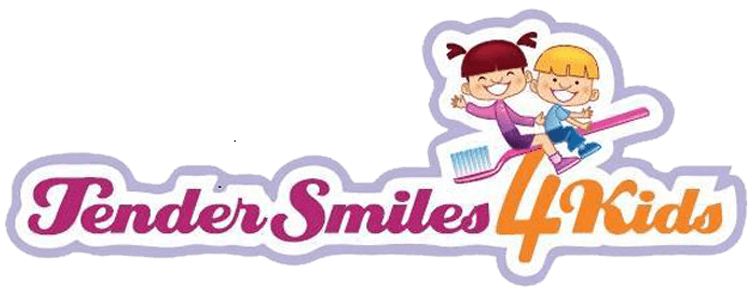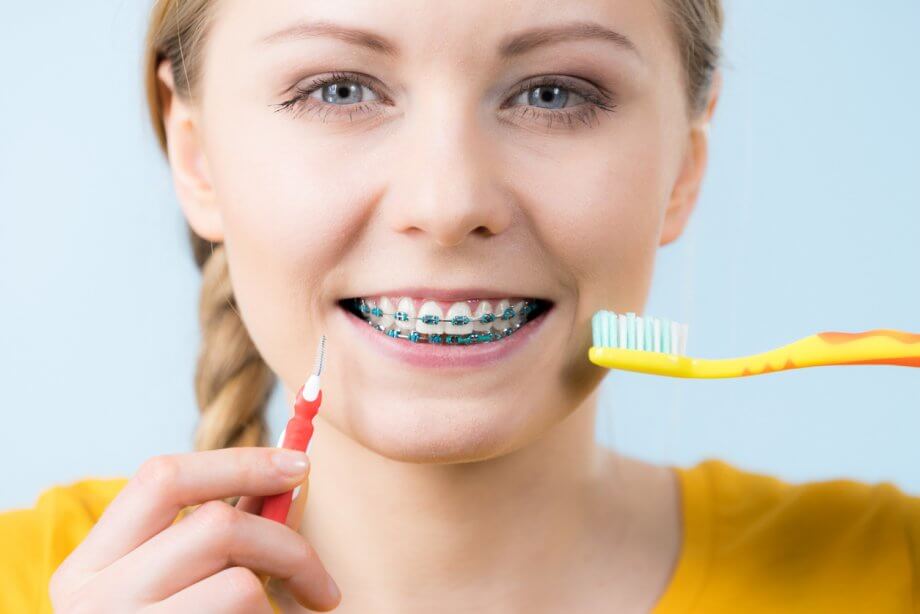Brushing and flossing might be more difficult now that you have braces, but it's also more important than ever. It's hard to brush with all those brackets and wires, but if you can devote a few extra minutes a day to do the job right, you'll be glad you did. These are the step-by-step instructions we provide our patients on how to brush teeth with braces.
1. Rinse First
The unglamorous reality of braces is that food can easily get lodged between your wires and brackets. This first step helps loosen any stuck particles to make it easier for you to brush them away. This step is optional, but it's helpful if you've just eaten. No need for a special mouthwash––water will work just fine!
2. Start with the Right Tools
We recommend brushing with a soft, end-rounded bristle toothbrush and always using fluoride toothpaste. Electric toothbrushes work well too if you have one. The reason dentists recommend soft bristles is because they do a great job keeping teeth clean without damaging delicate gum tissue.
3. Brush Thoroughly
Brushing thoroughly means brushing everywhere. If visuals help, try these illustrations from the American Association of Orthodontics. Brushing with braces means:
- Brushing above your braces
- Brushing below your braces
- Brushing the chewing surfaces of your teeth
- Brushing behind your teeth
Without braces, you should always brush for 2 minutes. With braces, brush for 2 minutes or longer if that's what you need to get your teeth and braces clean. When you're finished, the metal on your brackets should look shiny, not dull. While you should brush twice a day at a minimum, try to brush after your meals whenever possible.
4. Swish Away the Plaque
Even if you rinsed before brushing, it's a good idea to do another rinse with water or mouthwash afterwards. This helps rinse away any plaque you've just brushed off of your teeth.
5. Floss Daily
While flossing morning or night is better than nothing at all, we recommend choosing to floss at night to make sure you've removed any food particles that have accumulated between your braces and your teeth throughout the day. Water flossers make the job easier, but traditional string floss works just fine. Waxed floss is better than unwaxed, though, because it's less likely to shred if it gets caught on your brackets.
Use your fingers or a floss threader to thread the floss under your wires and then floss as usual, pushing and pulling the floss back and forth gently, working all the way up to the gum line.
6. Try an Interproximal or Interdental Brush
This is a small brush that fits under the wires of your braces to give you a little extra cleaning power. It's especially suited for removing plaque from the sides of your brackets. If your teeth are not too crowded, you may even be able to clean between them with one of these tools instead of using dental floss.
Why Good Oral Hygiene Matters with Braces
Plaque can accumulate very easily on teeth with braces. Because of this, your risk of cavities, gingivitis, and gum disease increases during this time.
Cosmetically, there's also a risk of staining and decalcification (white marks on the teeth) with braces. These can be particularly noticeable once your braces are removed. Stains aren't as serious as cavities and gum disease, but after you've invested time and money into creating a beautiful smile, the last thing you want to do is have to go through whitening treatments for stains too.
Learn More About Brushing with Braces
If you have any questions about how to effectively brush and floss with braces, we can provide instruction at your next appointment. Contact us to schedule a visit at one of our four New Jersey locations: Freehold 732-625-8080, North Brunswick 732-249-1010, Edison 732-549-3773, or Roselle 908-245-5556.

